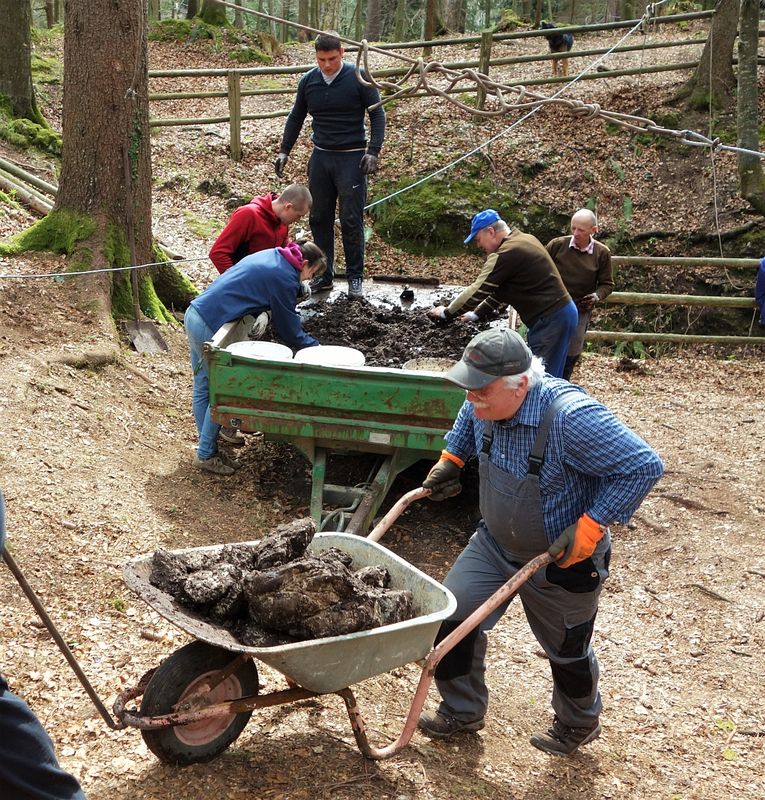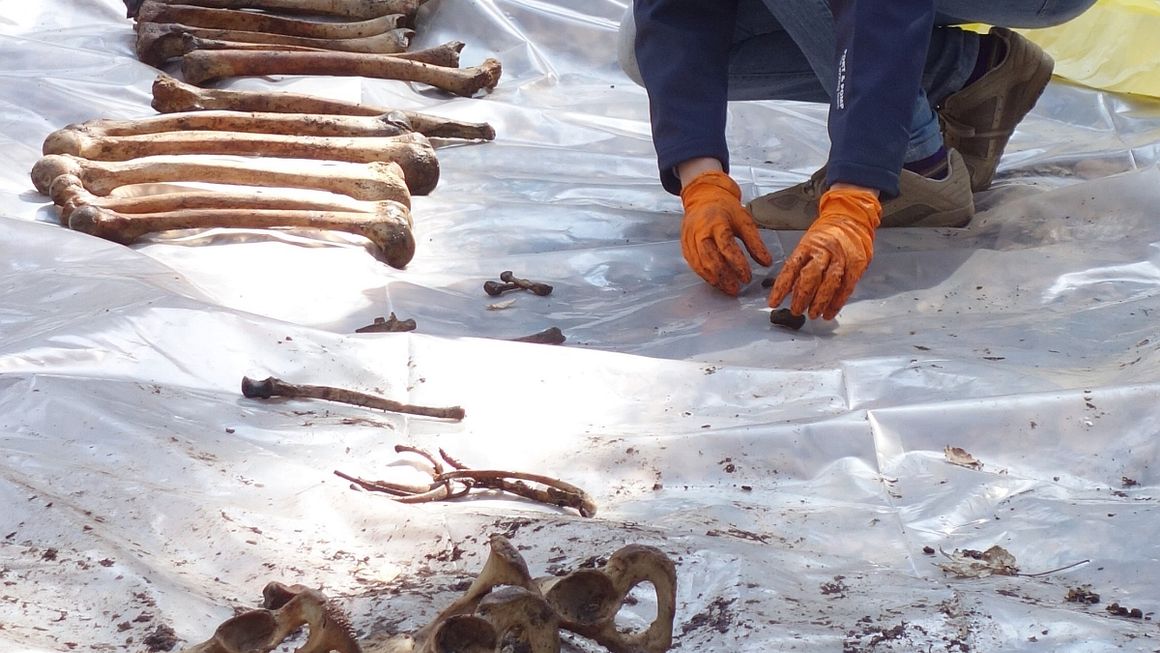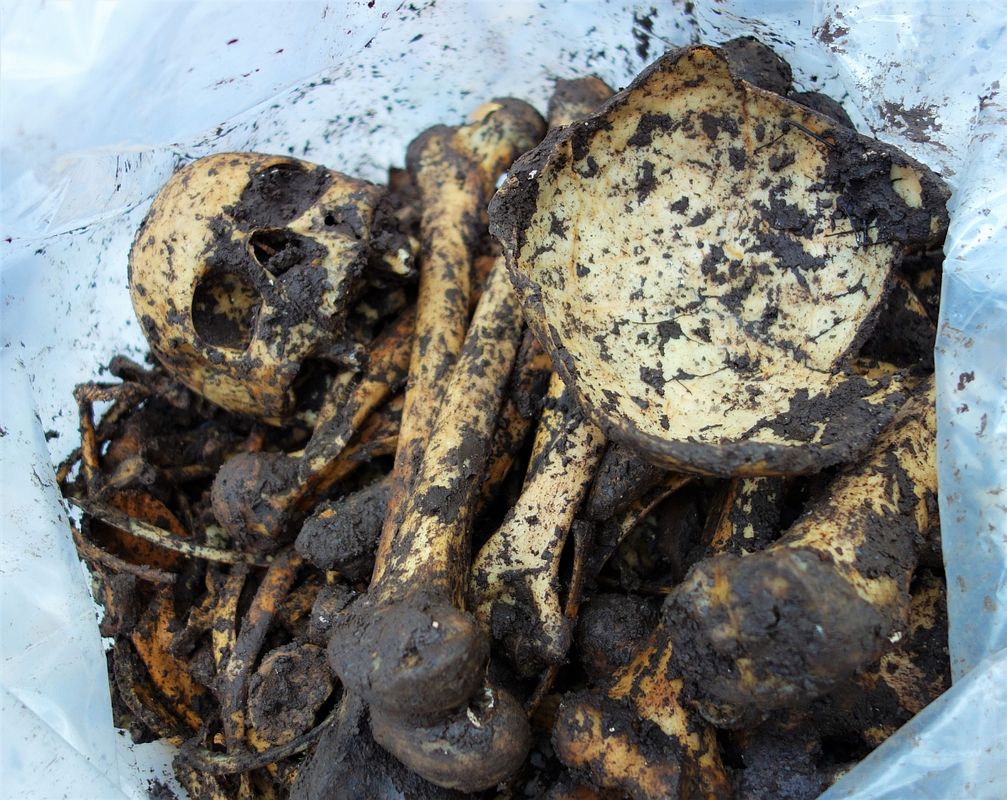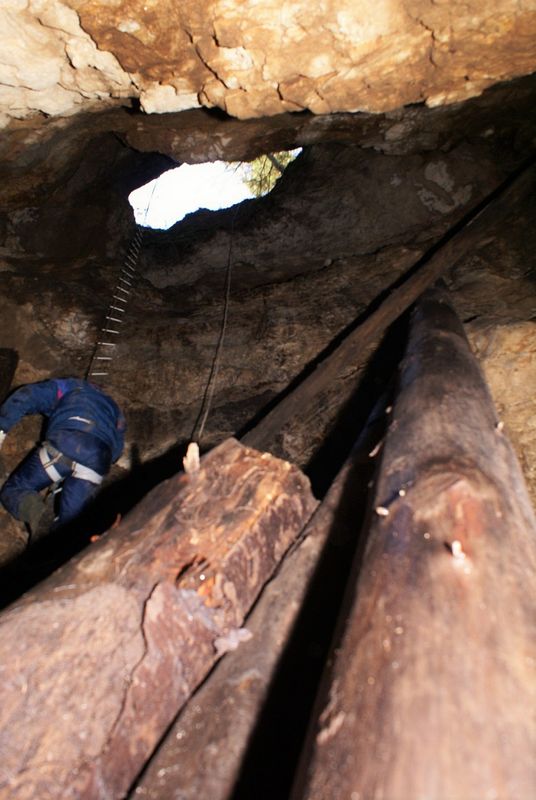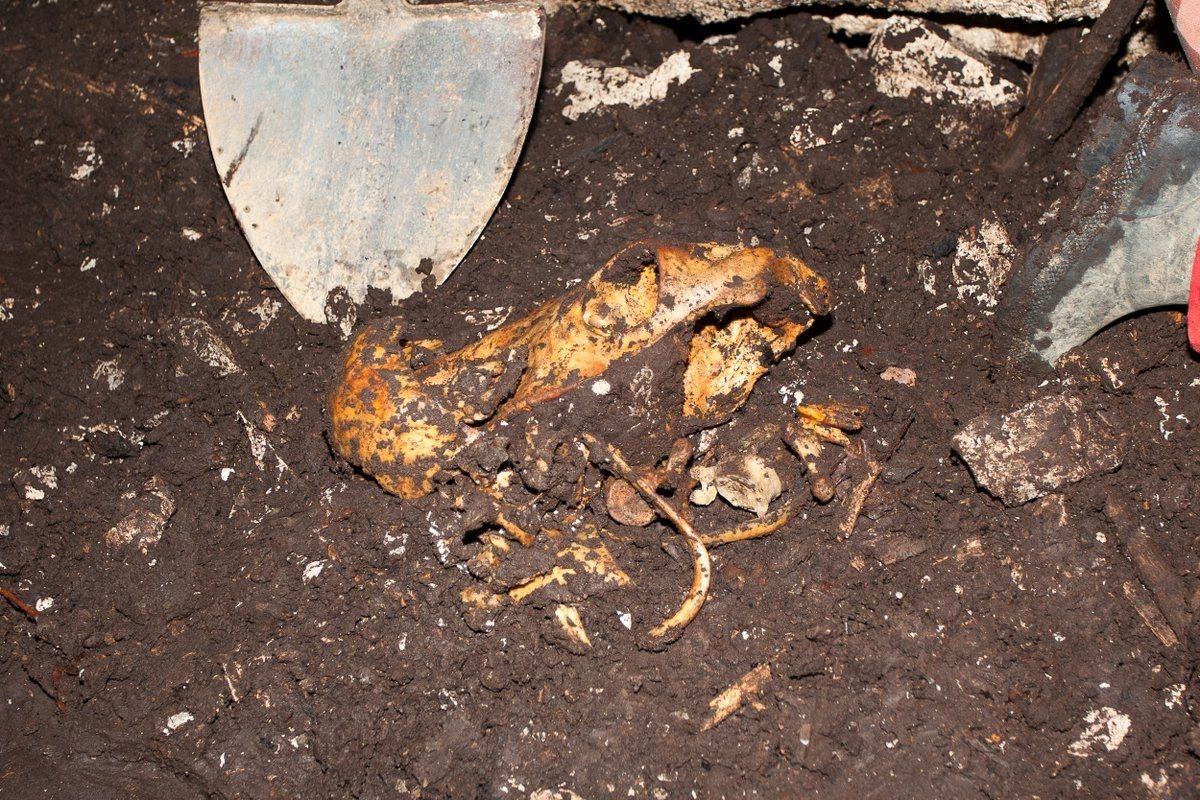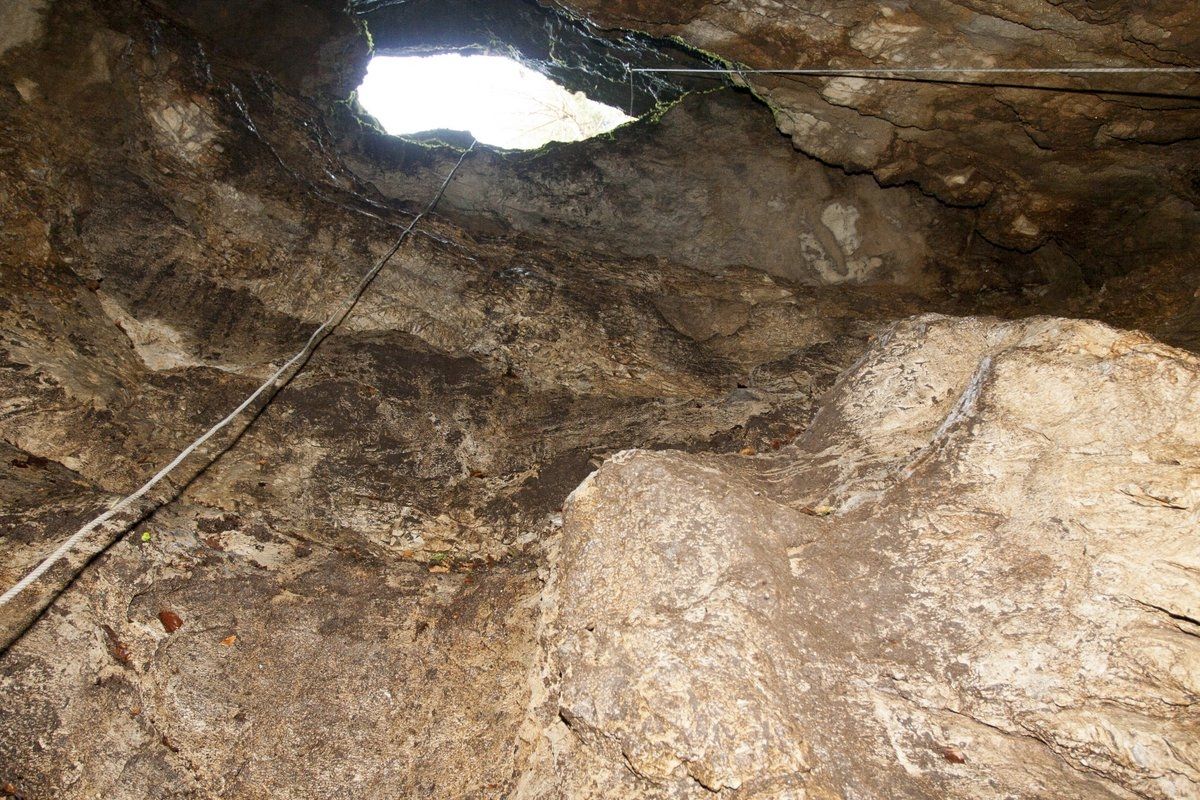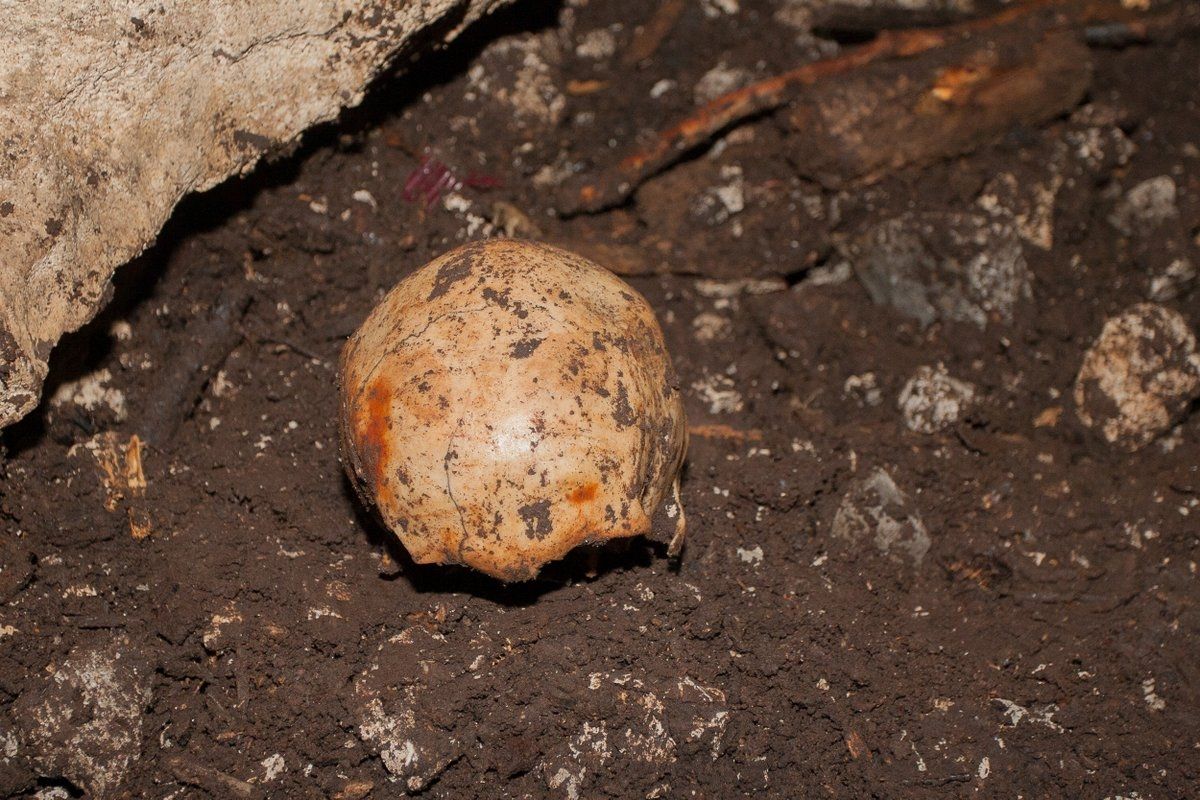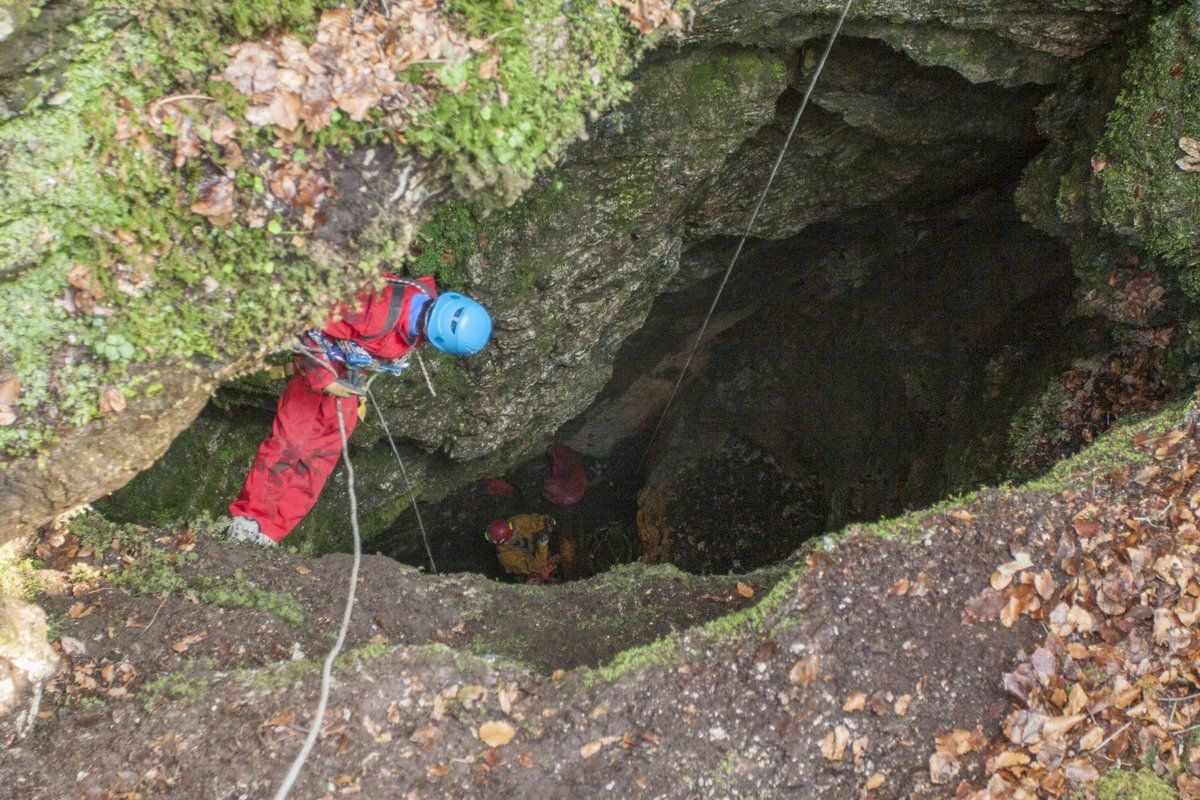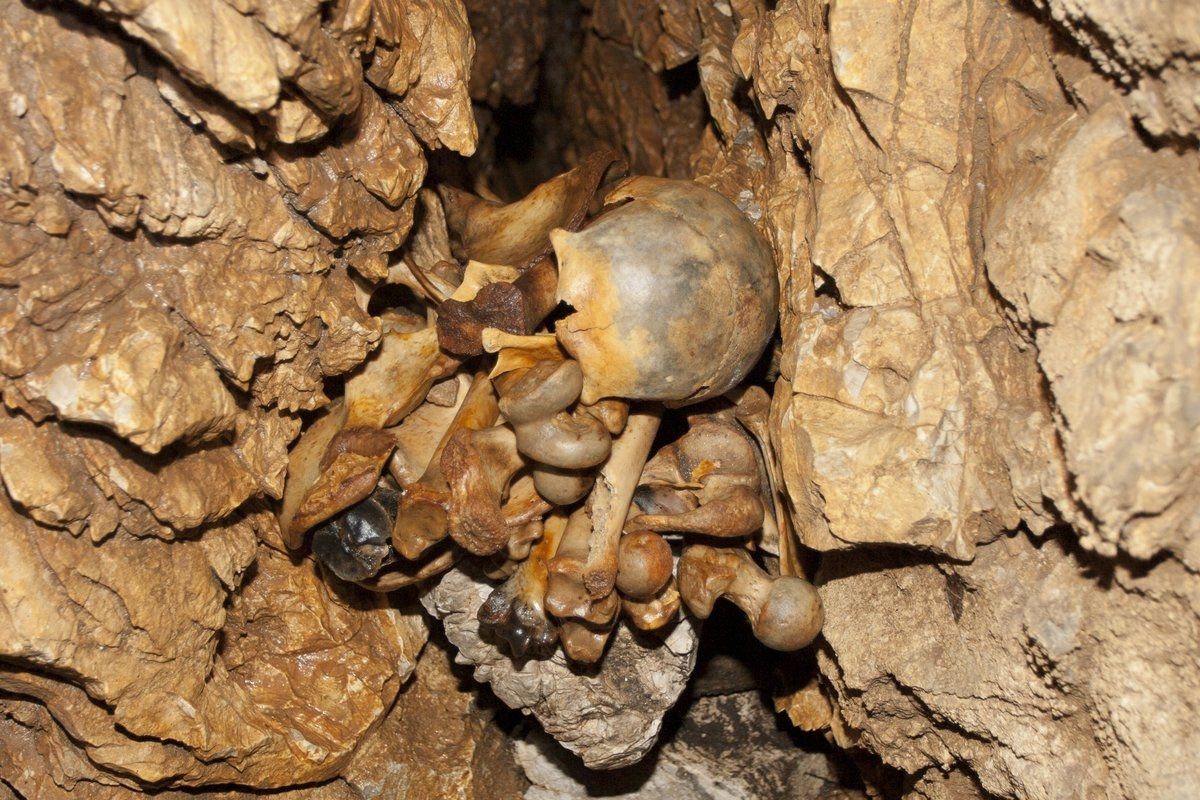Our Nation (of Slovenia) Keeps the Evidence
At the end of March, Domobranci (Slovenian Home Guard) from Notranje Gorice visited the Krimska Cave, one of the horrifying mass graves into which the red executioners threw hundreds of their victims in 1942 and 1943. A special group of Domobranci entered the cave and brought out many skulls, ladies' shoes and pieces of clothing belonging to Slovenians that had been thrown into the cave.
25 April, 1945
Visit to the Krimska Cave
I heard about the horrifying Krimska Cave, a mass grave of our compatriots, victims of the red executioners, a some time before. I imagined this unhappy place just as it turned out to be: a deep Karst chasm with steep and damp rock walls that widen up at the bottom. The Krimska cave is about 25 metres deep and widens at the bottom in one direction only, hence it looks like a big rock crack.
In the early morning of 23rd March, joined by Domobranci from Notranje Gorice, we disembarked in front of the Borovnica Bridge. It was still night time as we quietly marched under the high arches of the old railway viaduct. Only the Commander’s German Shepherd, Pino, who had served in the emperor’s Savoy Army before taken in by the Commander, a guard officer, playfully ran in the cold fresh air of the spring morning.
Once nearly all stars in the sky went out, we were joined at the crossroads by a few more Domobranci from the neighbouring post. We were moving south. We crossed the flat between bushes and the creek then started up a steep ascent. After a two-and-a-half-hour walk, we were in the place.
The cave is a few tens of metres away from the forest path, surrounded by pine and beech trees. At the entry we held onto thick and strong bush branches in order to peek down into the cave. There we saw beaming white bones hidden under the branches and thin tree trunks thrown over the bodies by the red criminals in order to cover up their horrendous crime.
As I already had experience from the horrifying Jelendol mass graves, I was happy to accept the Commander’s invitation, when he opened his backpack and took his flask off his belt, to have a snack. I was prepared for even worse scenes that require some physical preparation from the man. By exercising self-control I was able to test just how much I can take in Jelendol, and I can report that a strong spirit can overcome even the worst moments. Here I didn’t expect such terrible scenes and the smell of decaying bodies as I had been told by witnesses a while before that the bodies had already almost entirely decomposed.
Some Domobranci tied long ropes around trees; others
prepared the carbide light; our photographer, Sergeant Major Pavlovčič,
busied himself with the camera, and Lieutenant Beranek was sketching
the cave entry. I put on my canvas jacket, straightened my cap and waited
for the moment when the first Domobranec would report that he reached
the bottom and untied the rope. Once this happened, I was tied with a rope around
my chest and with my hand I grabbed the parallel rope. Soil and rocks
were rolling in front and behind me so that I got hit on my shoulders
and even my head by some larger stones that kept falling as I was lowered
over the edge of the cliff, conditions being perfect to graze the skin off one’s fingers if one was not careful enough. Once I reached the
bottom and untied myself, I could see that my predecessor was already lifting logs and illuminating the area with the carbide lamp among the damp walls. Only at this moment did I realise how difficult our work down here was. The cave is narrow and deep and the skeletons are covered
by heaps of branches and tree trunks. The air is clean and there is no sense of decomposing bodies. Only bare bones remain. Peacefully, as if attending to some ordinary task, I lifted skulls and bones and
put them on a heap.
When a man experiences momentous and tragic moments, he sometimes becomes numb and carries on as if nothing special had happened. In this I see God’s providence that protects the weak human heart and numbs
it in such moments, otherwise it might not be able to take on such a big burden. For the first time in my life I hold in my hands a human
skull from a grave and calmly observe the hollowed bones that got damaged
either in the fall or under torture. Another skull that I hold has a circular hole at the temples. On the other side the hole is bigger. It is quite clear that a bullet went in and out. It is true that this the second time that I am involved in such a task which makes it a bit easier to take it all in but even if I discount this fact, it can be
said that anyone would find it easier to deal with the Krimska Cave than watch the decaying bodies in Jelendol. But there is something that makes one shudder. Namely, how very brutal, bestial and horrifying is the way the red executioners removed innocent Slovenians from this world
in this unfortunate place. I imagine a victim being taken to the edge of the cliff and then pushed with the rifle butt into the black depth. How many were still alive a few days later, with broken bones and awaiting death with no hope of rescue? In this respect, the Krimska Cave is much more horrifying than Jelendol.
After me a few more Domobranci come down. We are squeezed against the walls, covering our heads with our hands to protect ourselves from the falling stones.
From somewhere we pull out a pair of brown female shoes that would certainly allow the family members to identify their dead relative.
When the last person comes out of the cave, we stand around the opening and with one minute's silence pay tribute to the memory of all these people who lie in its depths andvow to warn our compatriots not to stray from the path of nationalism into side alleys as did the anti-national communists with their servants who joined together in the fake "liberation front".
Ljenko Urbančič
Hereunder is a report from April, 2016 of a project to excavate remains from the Krimska Cave and rebury the victims.
"In addition to human remains, evidence of crimes in the Krimska Cave can also be found in records from that period, hence the local Borovnica Council passed a decision a few years ago to rebury all victims on the council territory and allocated a share of council funding for the excavations from the Krimska Cave.
"After some complications, the works started at the end of 2015. The Ggovernment issued consent to rebury the victims and the Governmental Committee for Addressing Hidden Mass Graves secured the funds for the burials and DNA tests. The project was led by the Speleological Club Borovnica with support from other speleology clubs, archaeologists and locals.
"The works were made even harder by the cave structure. The cliff at the entry runs sideways and the barrels get stuck while being pulled out. Additionally, the caveís depth represents another problem as the measurements do not match those taken before the war. According to some reports, the cave was mined twice during the war and later filled with additional materials and felled trees.
"The Speleological Club Borovnica in co-operation with experts and volunteers started to excavate the remains from the Krimska Cave. Up to date they have dug out remains of 27 people.
"Over six weeks or two weeks of digging they excavated 213 barrels of rocks and wood mixed with remains of 26 people while one skeleton was found in a nearby smaller chasm. As reported by the Speleological Club Borovnica, the Krimska Cave was the scene of many crimes during WW2
"A reconciliation ceremony took place in front of Krimska Cave in 1990 and the locals erected a little chapel with a huge cross in front of it.
